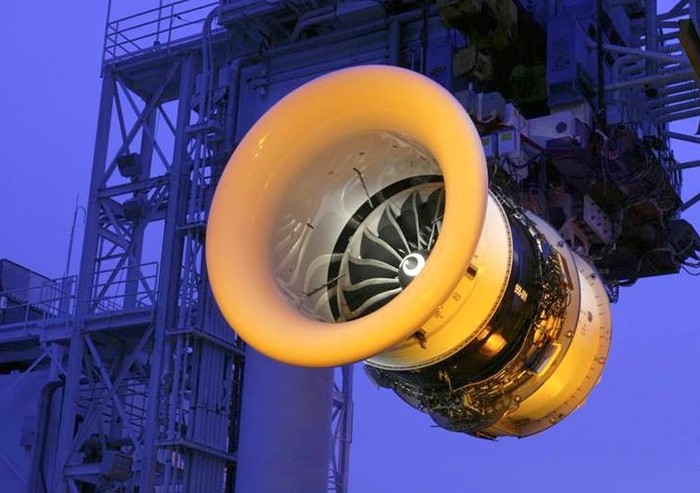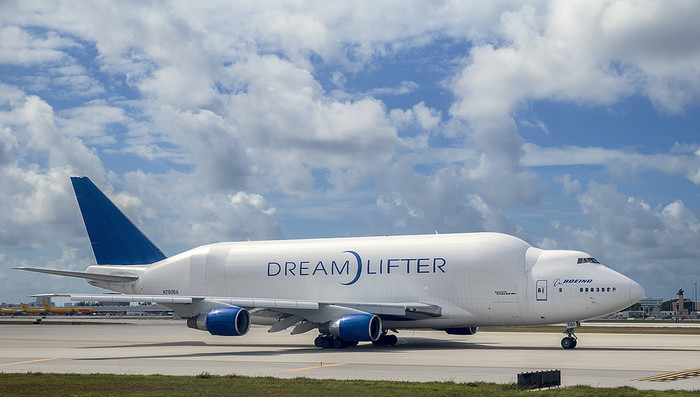
Image by USDA A GEnx engine undergoes testing -- this is the make of engine used on the 787 Dreamliner.
In late July a Boeing 787 assembled in Charleston took off for a test flight and in its wake left mystery debris and fire near the Charleston International Airport runway. In late July an investigation into the problem began, and Friday the results arrived.
The investigation into the failure of the fractured "mid-shaft" on the GEnx engine has, so far, only lead to more concerns.
The National Transportation Safety Board writes, "In addition, on August 31, 2012, a GEnx-1B engine installed on a Boeing 787 that had not yet flown was found to have an indication of a similar crack on the fan midshaft. The fan midshaft was removed from the engine for further inspection and examination. As a result of the investigative work to date, the NTSB has determined that the fan midshafts on the GEnx engines fractured or cracked at the forward end of the shaft where the retaining nut is installed.
"GE developed a field ultrasonic inspection method to inspect the fan midshaft in the area where the fracture and crack occurred that can be accomplished with the engine still installed on the airplane. To date, all in-service and spare GEnx-1B engines have been inspected. In addition, all GEnx-2B engines on passenger airplanes have been inspected. However, the NTSB is aware of approximately 43 GEnx-2B engines on 747-8F cargo airplanes that have not yet been inspected and is concerned that they are potentially susceptible to a fan midshaft failure.
"More recently, a Boeing 747-8F cargo flight, operated by Air Bridge Cargo, equipped with General Electric GEnx-2B turbofan engines, experienced a loss of power in one of the engines during the takeoff roll in Shanghai, China. The airplane had accelerated through 50 knots when the engine's low pressure rotor speed dropped. The pilot rejected the takeoff and returned to the ramp. Photographs of the low pressure turbine show damage similar to the GEnx-1B engine from the Charleston incident. The NTSB will continue to coordinate with our investigative counterparts in China."
As a result, two urgent safety recommendations have been issued:
1: Issue an airworthiness directive to require, before further flight, the immediate ultrasonic inspection of the fan midshaft in all GEnx-1B and -2B engines that have not undergone inspection; and
2: Require repetitive inspections of the fan midshaft at a sufficiently short interval that would permit multiple inspections and detection of a crack before it could reach critical length and the fan midshaft fractures.

